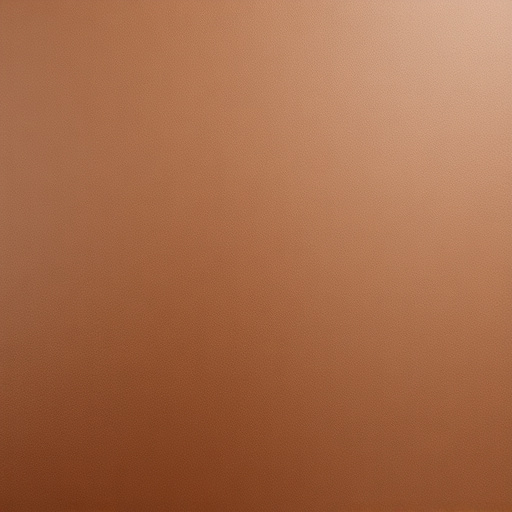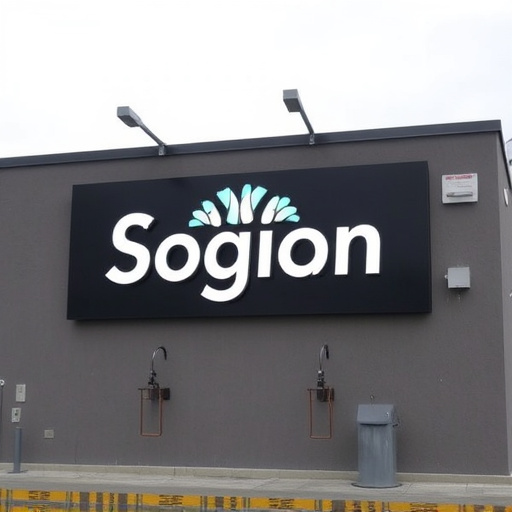Mirror Protection Film: Fast Scratch Prevention for Clear Surfaces
Mirror protection film is an innovative, easy-to-install solution for maintaining flawless mirrors i…….
In the realm of optics and surface protection, mirror protection film has emerged as a revolutionary technology, offering innovative solutions for various industries. This article aims to delve into the intricate world of mirror protection films, exploring their role, impact, and potential. By the end, readers will have a profound understanding of this advanced material, its applications, and its significance in shaping modern technologies.
Mirror protection film, as the name suggests, is a specialized protective coating designed to safeguard mirrors and reflective surfaces from damage, while enhancing their visual appeal. Beyond aesthetics, these films play a pivotal role in diverse sectors, ranging from automotive and architecture to healthcare and electronics. This comprehensive guide will unravel the various facets of mirror protection films, providing insights into their composition, global reach, economic implications, technological innovations, regulatory considerations, real-world applications, and future prospects.
Definition: Mirror protection film is a thin, transparent protective layer applied over mirrors or reflective surfaces to provide durability, enhance scratch resistance, and offer additional functional benefits. It is typically made from advanced polymer materials that combine optical clarity with robust mechanical properties.
Core Components: The primary components of mirror protection films include:
Base Film: This forms the foundation and is usually a flexible polymer like polyethylene terephthalate (PET) or polycarbonate. It ensures the film adheres well to the surface and provides a base for subsequent layers.
Hard Coat: A durable, hard layer applied over the base film, designed to resist scratches, abrasions, and impact. Materials used include hard polymers, ceramics, or even diamond-like carbon (DLC) coatings.
Antireflective Coating: This optional layer reduces surface reflection, improving visibility and minimizing glare. It is particularly useful in applications where clear image transmission is critical, such as automotive windscreens. Common antireflective coatings include anti-glare films, low-e (low-emissivity) coatings, or photochromic materials that darken in sunlight.
Adhesive Layer: An adhesive backing ensures the film sticks securely to the mirror or reflective surface. It is designed to be strong enough to hold the film in place while allowing easy application and removal when needed.
Historical Context: The concept of protective coatings for mirrors dates back several decades, but early attempts often resulted in films that compromised visual clarity or durability. Significant advancements began in the late 20th century with the development of advanced polymer materials and nano-technology. These innovations led to the creation of high-performance mirror protection films capable of withstanding harsh environments, maintaining optical clarity, and providing enhanced aesthetic appeal.
Mirror protection film has left an indelible mark on various industries globally, driven by increasing demand for durable, aesthetically pleasing reflective surfaces. Here’s a glimpse into its international influence:
| Region | Key Applications | Growth Drivers |
|---|---|---|
| North America | Automotive (windshields, side mirrors), Healthcare (patient monitoring screens), Consumer Electronics (smartphones, tablets) | Strict safety regulations, Increasing adoption of advanced driver-assistance systems (ADAS), Growing demand for touchscreens and reflective displays |
| Europe | Architecture (glass facades, mirrors in public spaces), Transport (railway mirrors, aircraft windscreens) | Stricter environmental standards, Focus on energy-efficient buildings, Increasing aviation travel |
| Asia Pacific | Automotive (fast-growing market for electric vehicles with advanced driver assistance), Electronics (smart home devices, wearable technology) | Rapid urbanization, Rising disposable income, Government initiatives promoting smart cities and digital transformation |
| Middle East & Africa | Luxury Automobiles, Hospitality Industry (hotels, resorts) | Expanding luxury car markets, Tourism sector growth |
| South America | Automotive (increasing production of electric vehicles), Consumer Electronics (local manufacturing hubs) | Economic development, Growing e-commerce sector |
Trends Shaping the Future:
Sustainability Focus: There is a growing demand for eco-friendly mirror protection films that offer durability and sustainability in equal measure. Recycled materials and recyclable film options are gaining traction.
Integration of Smart Technologies: Mirror protection films are evolving to incorporate smart features like touch sensitivity, antistatic properties, anti-microbial coatings, and even integrated sensors for enhanced functionality.
Customization and Design Flexibility: Manufacturers are offering a wide range of patterns, colors, and finishes to cater to diverse design preferences, allowing architects, designers, and automakers to create unique, visually appealing reflective surfaces.
Advanced Coating Technologies: Continuous research and development are pushing the boundaries of coating technology, resulting in films with improved optical clarity, enhanced durability, and better resistance to extreme environmental conditions.
The global mirror protection film market is a dynamic and expanding sector, driven by factors such as increasing automotive production, rising demand for touchscreens, and the need for durable, reflective surfaces in various industries.
Market Size and Growth: According to a recent report by MarketsandMarkets, the global protective films market (including mirror protection films) is projected to reach USD 36.2 billion by 2025, growing at a CAGR of 8.2% during the forecast period (2020-2025). The automotive sector accounts for a significant share of this growth due to the increasing adoption of advanced driver assistance systems and electric vehicles.
Investment Patterns: The market attracts substantial investments from both established manufacturers and new entrants. Key players focus on research and development to create innovative, high-performance films while smaller companies often target niche markets or develop specialized coatings for specific applications.
Economic Impact: Mirror protection film contributes to economic growth in several ways:
Automotive Industry: It enhances vehicle safety and visibility, reducing the number of accidents and associated costs. The global automotive industry’s shift towards electric vehicles and autonomous driving further drives the demand for advanced mirror protection films.
Construction and Architecture: In buildings and public spaces, these films improve energy efficiency by reducing solar heat gain and enhancing glare control. This contributes to lower cooling costs and more comfortable indoor environments.
Electronics Manufacturing: The growing market for touchscreens, smartphones, and wearable devices has fueled the demand for mirror protection films with improved optical clarity and durability.
The field of mirror protection film is characterized by continuous innovation, driven by technological breakthroughs and the need to meet evolving industry demands. Here are some significant advancements:
Nano-Coating Technologies: Nanotechnology has revolutionized coating development, enabling the creation of ultra-thin, highly durable films with improved scratch resistance and enhanced optical properties.
Optically Clear Polymers: Researchers have developed advanced polymers that offer superior optical clarity, ensuring minimal light distortion or reflection. This is critical for applications where clear image transmission is essential, such as automotive windscreens and electronic displays.
Self-Healing Coatings: Some manufacturers have introduced self-healing technologies, allowing films to repair minor scratches or damage over time. This extends the lifespan of protective coatings, especially in harsh environments.
Integrated Sensors and Displays: Mirror protection films are evolving to incorporate sensors for touch control, gesture recognition, and even integrated displays. These smart films offer enhanced user experiences and open up new possibilities for interactive interfaces.
Antimicrobial Treatments: To address hygiene concerns, especially in healthcare settings, antimicrobial coatings are being incorporated into mirror protection films. These treatments inhibit the growth of bacteria, viruses, and fungi, contributing to cleaner and safer environments.
The development and use of mirror protection film are subject to various policies and regulations, which vary across regions. These frameworks ensure product safety, environmental sustainability, and consumer protection.
Automotive Industry Standards: In many countries, automotive windscreen and side-mirror films must adhere to strict standards for impact resistance, scratch durability, and optical clarity. Organizations like Euro NCAP (European New Car Assessment Programme) set benchmarks for vehicle safety, including the performance of protective coatings.
Electrical and Electronics Regulations: Mirror protection films used in electronic devices must comply with regulations related to electromagnetic compatibility (EMC), ensuring they do not interfere with device functionality or cause interference.
Environmental Standards: Manufacturers must adhere to environmental regulations regarding the use of solvents, emissions, and end-of-life disposal. The European Union’s REACH (Registration, Evaluation, Authorization, and Restriction of Chemicals) regulation is a significant example that influences global chemical usage.
Product Safety and Quality Assurance: Numerous countries have established product safety standards and quality assurance programs to protect consumers. These ensure that mirror protection films meet certain performance criteria and are safe for intended applications.
Despite its numerous advantages, the adoption of mirror protection film is not without challenges and criticisms. Addressing these issues is crucial for the sustainable growth of this technology.
Main Challenges:
Cost: High-performance mirror protection films can be more expensive than conventional coatings or reflective surfaces, which may deter some consumers or businesses with tight budgets.
Application Complexity: Proper application requires skilled labor and specific conditions, such as clean environments and precise temperature control. Inadequate application can result in suboptimal performance or even damage to the surface.
Environmental Concerns: Traditional films may contain chemicals that raise environmental worries, particularly regarding disposal and recycling. Manufacturers are addressing these concerns by developing eco-friendly alternatives.
Criticisms and Strategies for Improvement:
Optical Distortion: Some critics argue that certain mirror protection films can introduce slight optical distortions or color changes, especially under intense lighting conditions. Advancements in nano-coating technologies and optically clear polymers are mitigating these issues.
Longevity: While modern films offer improved durability, there is always a need for longer-lasting solutions, particularly for outdoor applications. Ongoing research focuses on enhancing scratch resistance and overall film longevity.
Standardization: The lack of standardized testing methods and performance criteria across regions can create inconsistencies in product quality. Organizations like the International Organization for Standardization (ISO) are working to establish global standards, ensuring consistent performance and safety.
Case Study 1: Smart Mirrors in Healthcare Settings
A leading hospital system implemented mirror protection film on patient monitoring screens and smart mirrors in various wards. The film incorporated antimicrobial properties, touch sensitivity, and a clear, anti-glare coating to enhance visibility. This application improved hygiene, enabled easier patient monitoring, and reduced the need for frequent screen cleaning. The case study highlighted the importance of tailored solutions, as the film’s performance in a controlled hospital environment differed from its use in automotive or consumer electronics.
Lessons Learned: Customized coatings that address specific industry needs are more effective. Additionally, combining multiple functional layers enhances overall system performance and user experience.
Case Study 2: Electric Vehicle Windshield Protection
A major electric vehicle manufacturer partnered with a mirror protection film supplier to develop a specialized coating for their advanced driver-assistance systems (ADAS). The film needed to withstand extreme temperature changes, resist scratches from road debris, and provide clear visibility for the vehicle’s cameras and sensors. After extensive testing, the custom-engineered film passed all performance criteria, ensuring safer driving and enhanced ADAS functionality.
Key Takeaways: Collaboration between manufacturers and original equipment makers (OEMs) is vital to address unique application challenges. Customized solutions that consider the specific environment and intended use can significantly improve product performance.
The landscape of mirror protection film is poised for continued growth and innovation, driven by emerging technologies, expanding applications, and evolving consumer demands. Here are some potential future areas:
Smart Building Integrations: As smart buildings become more prevalent, mirror protection films will play a role in creating interactive, responsive surfaces. These could include smart mirrors that display weather updates, news feeds, or even art installations.
Augmented Reality (AR) and Virtual Reality (VR): The film’s optical clarity and durability make it suitable for AR/VR devices, where clear, unobstructed views are essential. Future films may incorporate specialized coatings to enhance specific AR/VR experiences.
Flexible Electronics: With the rise of flexible displays and electronic devices, mirror protection films will need to adapt to these new forms. Researchers are exploring ways to create flexible, stretchable coatings that maintain their performance under deformation.
Sustainable and Eco-Friendly Solutions: There is a growing demand for mirror protection films that meet environmental sustainability goals. Future developments may include films made from biodegradable materials or recycled content, along with improved recycling processes.
Personalized and Customized Designs: Consumers are increasingly seeking personalized options, leading to a market shift towards customized mirror protection films with unique patterns, colors, and finishes.
Mirror protection film has emerged as a transformative technology, revolutionizing how we interact with reflective surfaces in various sectors. Its ability to provide durability, scratch resistance, enhanced visual clarity, and additional functional benefits is undeniable. As the global market expands and new applications emerge, this technology will continue to shape industries and improve our daily lives.
The journey from its early beginnings to today’s advanced coatings showcases the power of innovation and collaboration. By addressing challenges, overcoming criticisms, and embracing sustainability, mirror protection film is poised to play an even more significant role in the future. As researchers, manufacturers, and industry leaders continue to push boundaries, we can expect even more remarkable advancements in this dynamic field.
Q: Are mirror protection films safe for use on car windshields?
A: Yes, modern mirror protection films designed for automotive applications meet strict safety standards and regulations. They are tested to ensure they do not compromise the structural integrity of the windshield or affect visibility during various weather conditions.
Q: Can these films improve energy efficiency in buildings?
A: Absolutely! Mirror protection films with specific coatings can reduce solar heat gain, minimizing interior temperature rise and lowering cooling costs. This is particularly beneficial for large glass facades and windows.
Q: How do I choose the right mirror protection film for my application?
A: Selecting the right film depends on your specific needs. Consider factors like intended use (automotive, architecture, electronics), environmental conditions, required optical clarity, durability needs, and any additional functional requirements. Consulting with experts or manufacturers can help narrow down the best option.
Q: Are there eco-friendly alternatives available?
A: Yes, many manufacturers are developing mirror protection films with a reduced environmental impact. These may include films made from biodegradable materials, recycled content, or those that adhere to strict environmental standards and regulations.
Q: Can these films be easily applied, or do they require professional installation?
A: While some applications, especially complex ones, may require professional installation, many mirror protection films can be applied by trained individuals or even DIY enthusiasts following the manufacturer’s instructions. Proper application ensures optimal performance and longevity.

Mirror protection film is an innovative, easy-to-install solution for maintaining flawless mirrors i…….

Mirror Protection Film is a revolutionary automotive accessory that shields vehicle mirrors from scr…….

Mirror protection film (PPF) offers versatile solutions for safeguarding mirrors in vehicles, buildi…….